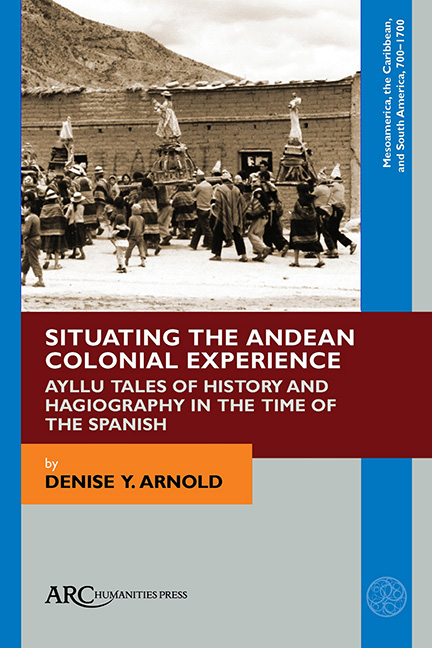 Situating the Andean Colonial Experience
Situating the Andean Colonial Experience Book contents
- Frontmatter
- Contents
- List of Illustrations
- Note About the Spelling of Toponyms and Proper Names
- Acknowledgements
- Maps
- Introduction
- PART ONE THE ORAL HISTORY OF QAQACHAKA
- PART TWO THE COLONIAL CACIQUES IN ORAL AND WRITTEN HISTORY
- PART THREE QAQACHAKA MARKA
- PART FOUR THE SAINTS APPEAR
- PART FIVE THE RELIGIOUS PRACTICES OF QAQACHAKA MARKA
- Some Conclusions
- Glossary
- Appendix A Document C of Don Franco Quispe Maraza
- Appendix B Document K of Don Franco Quispe Maraza
- Bibliography
- Thematic Index
- Index of Toponyms
Chapter 10 - The Construction of Qaqachaka’s Church
Published online by Cambridge University Press: 22 June 2021
- Frontmatter
- Contents
- List of Illustrations
- Note About the Spelling of Toponyms and Proper Names
- Acknowledgements
- Maps
- Introduction
- PART ONE THE ORAL HISTORY OF QAQACHAKA
- PART TWO THE COLONIAL CACIQUES IN ORAL AND WRITTEN HISTORY
- PART THREE QAQACHAKA MARKA
- PART FOUR THE SAINTS APPEAR
- PART FIVE THE RELIGIOUS PRACTICES OF QAQACHAKA MARKA
- Some Conclusions
- Glossary
- Appendix A Document C of Don Franco Quispe Maraza
- Appendix B Document K of Don Franco Quispe Maraza
- Bibliography
- Thematic Index
- Index of Toponyms
Summary
They’d taken possession of the place by giving three turns (on the ground), this to take possession of the territory.
Don Franco Quispe, from the hamlet of QañawiLET US RETURN to the main thread of the second cycle of narratives by Don Franco Quispe, in order to understand the subsequent events in the history and hagiography of Qaqachaka in terms of the colonial juridical dispositions that the ancestors of the place were set on fulfilling. Don Franco continued this second cycle with an episode about the moment of founding the new pueblo de indios of Qaqachaka. Now with the miraculous saint-god Tata Quri in their possession, the next step for the ancestors was to construct the church in the central plaza of the marka, in order to worship him inside there.
Don Franco told us first about the ritual in which Juana Doña Ana of Qaqachaka, the widow of Lujano Choquecallati (whose leg arrived in Qaqachaka, still in the stirrup of the startled horse), together with the brother of the deceased, Fernando Choquecallati of Condo, take possession of the plot of land for the plaza and then the church. Don Franco narrated the most concise version of this event in the following way:
Afterwards, Juana Doña Ana and Fernando Choquecallati, Lujano Choquecallati's brother … well Fernando Choquecallati with the widowed woman constructed the church, but first of all by doing three turns on the earth (kins walakisiñ pirqatawi). They’d possessed it in this way.
First they measured out the plaza and only then did they measure out the church. They’d made the four corner altars where they used to light candles, which no longer exist. They’d finished it on a Tuesday. Then they’d said “Now we’ve made the church,” saying.
We can immediately note certain features in common between various rites, those here of taking possession of the plaza of Qaqachaka marka, then the plot of land for the church, and those rites described by Don Franco in a previous section about taking possession of the territory of the whole annex. Basically, each of these rites deals with the acts of the founding ancestors of doing three turns, by rolling over on their bodies on the earth, as a way of taking possession of it.
- Type
- Chapter
- Information
- Situating the Andean Colonial ExperienceAyllu Tales of History and Hagiography in the Time of the Spanish, pp. 203 - 216Publisher: Amsterdam University PressPrint publication year: 2021
